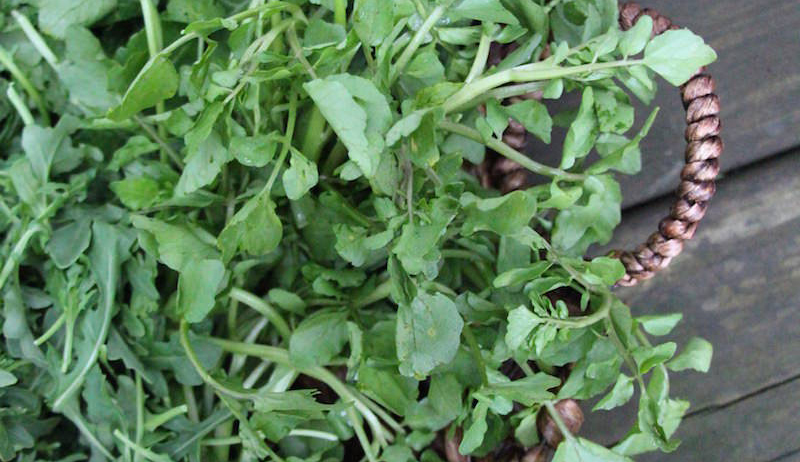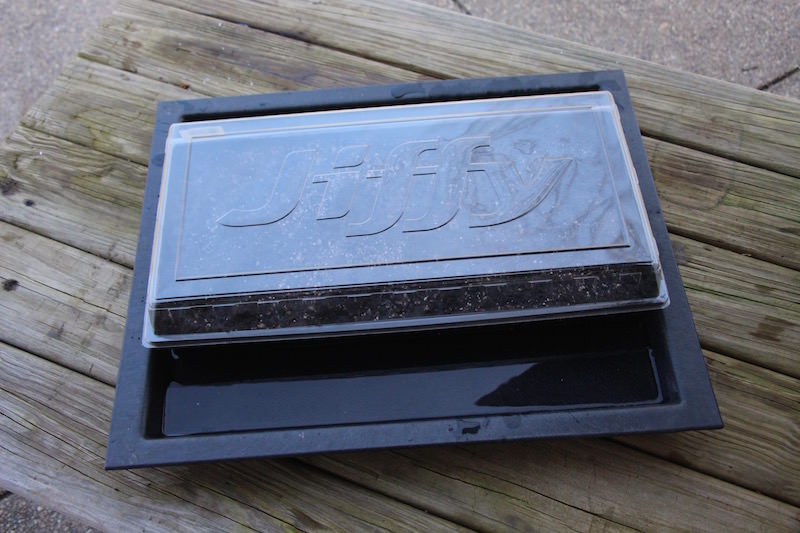
Watercress (Nasturtium officinale) is a delicious green with a sharp, zesty flavor and a delightful crunch. Closely related to mustard greens, radish and garden cress, watercress is a semi-aquatic green that’s rich in vitamins A, K and C. Despite being in the genus Nasturtium, watercress is not related to the common flowering plant known as nasturtium, which is actually in the genus Tropaeolum.
Many gardeners may avoid growing this flavorful plant due to its aquatic nature, but this green is surprisingly easy to grow if you’re willing to provide it with the right growing conditions. In its native Europe and Asia, watercress grows naturally near running water and mimicking those conditions results in the best production.
Watercress is an annual that prefers cool weather, so this project should be started in early spring. Plants can be harvested as young sprouts, called microgreens, delicious on sandwiches and salads, or they can be allowed to develop into mature leaves and shoots before harvest.
What You’ll Need

- packet of watercress seeds
- plastic nursery flat
- solid plastic or aluminum tray slightly larger than the nursery flat
- high-quality soilless potting mix
- clear plastic dome for the nursery flat or a sheet of plastic kitchen wrap
- scissors
- water
Step 1

Because watercress prefers to have its roots constantly wet, begin by cutting a few 1/2-inch, square holes into the bottom of the plastic nursery flat using the scissors. The water will be absorbed up through these holes and into the soil.
Step 2

Fill the plastic nursery tray with the potting mix to within a 1/2 inch of its upper rim. Tap the bottom of tray gently onto a hard surface a few times to help the soil settle, but do not press the soil down with your hands.
Step 3

Watercress seeds are very tiny. Carefully distribute some seeds across the soil surface, trying to space them approximately 1 inch apart if you plan to harvest larger shoots or 1/4 inch apart if you’d prefer to harvest your plants as microgreens.
Step 4

After spreading the seeds across the soil surface, do not cover them. Watercress seeds need light to germinate.
Step 5

Use your hand to press the seeds firmly against the soil. Again, do not bury them, but ensure good seed-to-soil contact.
Step 6

Water the seeds in well. Put the plastic nursery tray into the larger plastic or aluminum tray. Then add clean, chlorine-free water to the bottom tray. The water level should be 1/2 to 1 inch above the bottom of the nursery tray.
Step 7

Place the clear, plastic dome over the nursery flat. If you don’t have a plastic dome, cover the nursery flat with a sheet of plastic kitchen wrap.
Step 8

Leave the plastic dome on the nursery tray until the seeds start to sprout, about six to eight days later. Remove the dome or plastic wrap at that time.
Step 9

To mimic the moving water watercress prefers, the water in the larger tray must be emptied and refilled every two to three days. Do not let the tray dry out or sit stagnant for long periods of time.
Step 10
You can harvest your watercress sprouts at any time. If you want them to mature to full size, thin the seedlings to a spacing of 3 inches on center. Snipping out the growing tip will cause branching and more leaf production, prolonging the harvest.
To harvest the leaves and shoots, cut them at the base with a pair of sharp, clean shears. Often the plants will resprout, giving you a second harvest.
Once the weather warms, the plants will go to flower and the leaves will turn bitter.
For a longer harvest season, sow a new flat of seeds every two weeks throughout the spring. You can also plant watercress seeds in the late summer for fall and early winter harvests.




